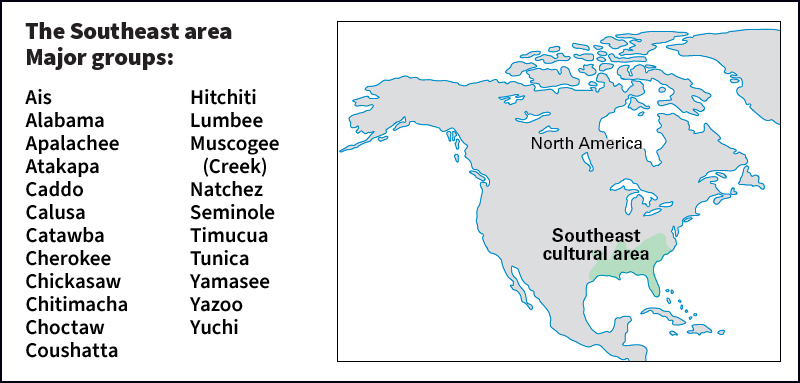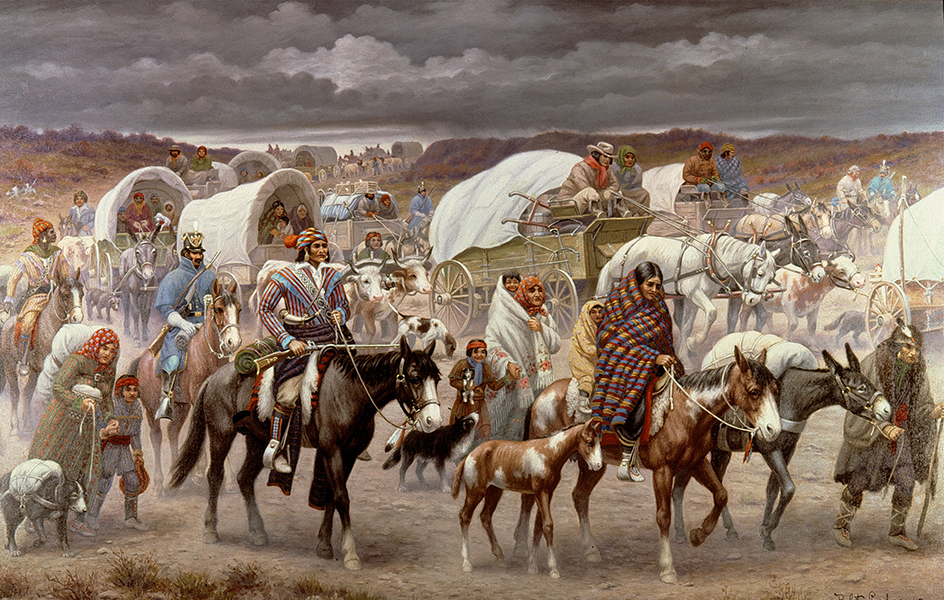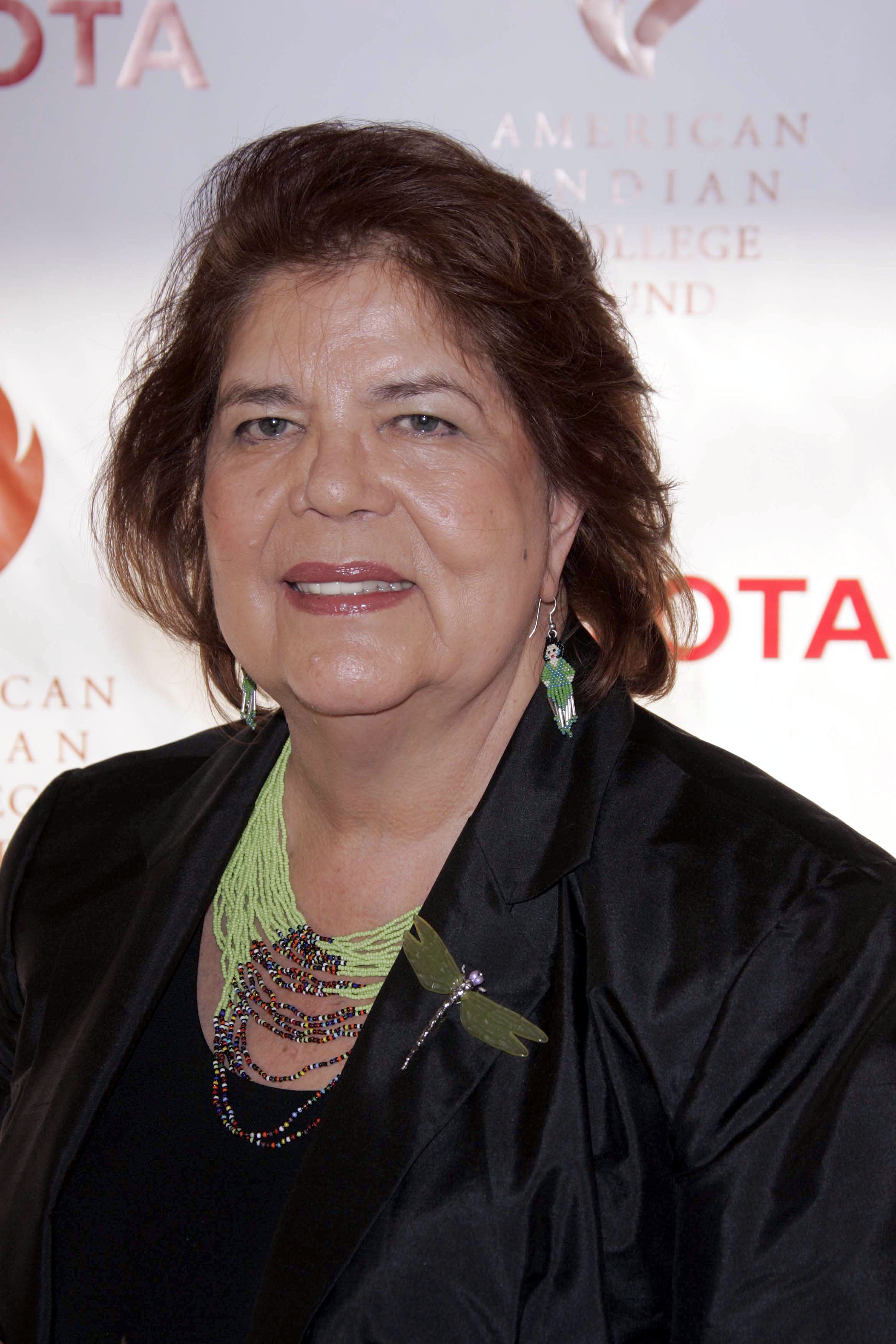Cherokee << CHEHR uh kee >> are one of the largest Native American tribes in the United States. About 260,000 Cherokee live in the United States. Many live in northeastern Oklahoma, with others mainly in the western states. The Eastern Band of Cherokee has about 8,000 members. Most live on a reservation in North Carolina. Only the Navajo rival the Cherokee in population.

The Cherokee originally lived throughout what is today western South Carolina, the Smoky Mountains, and the Tennessee River Valley. The Cherokee farmed. They supplemented their diet by hunting and by gathering wild plant foods. Women often held powerful positions in Cherokee society, which was organized into clans through the mother’s line. Cherokee men oversaw village government and served as warriors.
In the 1700’s, increasing contact with European colonists exposed the Cherokee to smallpox and other diseases, reducing their population. The Cherokee lost much of their homeland through colonization. Cherokee warriors fought on the side of the British in the French and Indian War (1755-1763) and in the American Revolution (1775-1783).
In the early 1800’s, the Cherokee developed a system of elections and courts and in 1827, their first Constitution. In 1821, a Cherokee man named Sequoyah developed a writing system, called a syllabary, for the Cherokee language. This enabled the Cherokee to develop their own school system and newspaper.
President Andrew Jackson enacted a policy of permanently removing Indigenous (native) peoples from the Southeast to areas west of the Mississippi River. In 1838, U.S. troops forced more than 16,000 Cherokee from their homes. In the winter of 1838 and 1839, thousands of Native Americans walked nearly 1,000 miles (1,600 kilometers) to new lands in the Indian Territory (now Oklahoma). This long march became known as the Trail of Tears. Many Cherokee became ill during the journey, and about 2,500 died. Around 1,200 Cherokee left the march and did not continue. About 400 Cherokee escaped the roundup. They joined about 600 Cherokee in North Carolina who had accepted private reserves from the government. By 1865, a permanent reservation was created for this group, who are now known as the Eastern Band of Cherokee.

The Cherokee government was forcibly dismantled in preparation for the statehood of Oklahoma in 1907. In the 1900’s, many Cherokee fell into deep poverty. By mid-century, however, the Cherokee began efforts to reestablish their tribal government. The Cherokee Tribal Council was restored in 1976 and the tribal courts in 1988. The Cherokee Nation is one of the most influential tribal governments in the United States.

